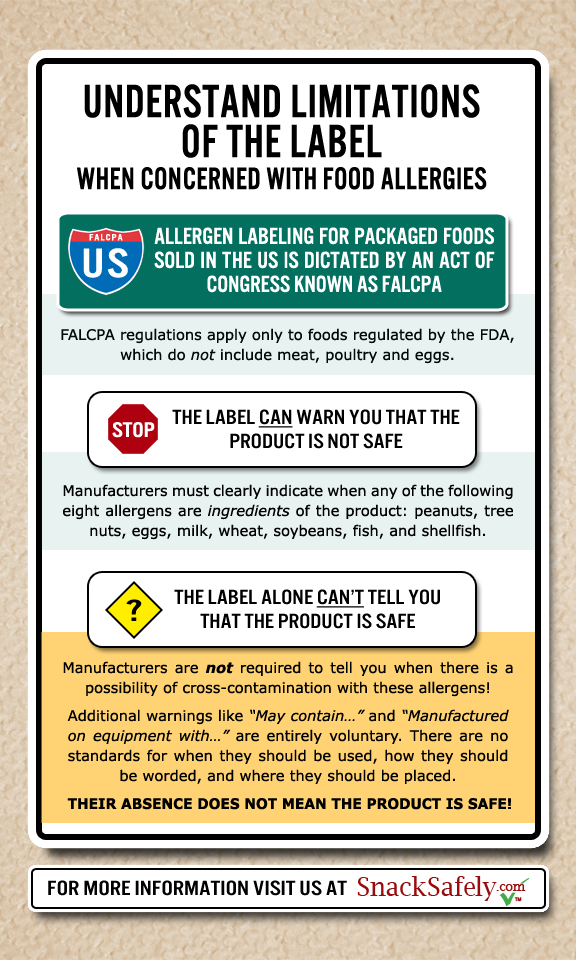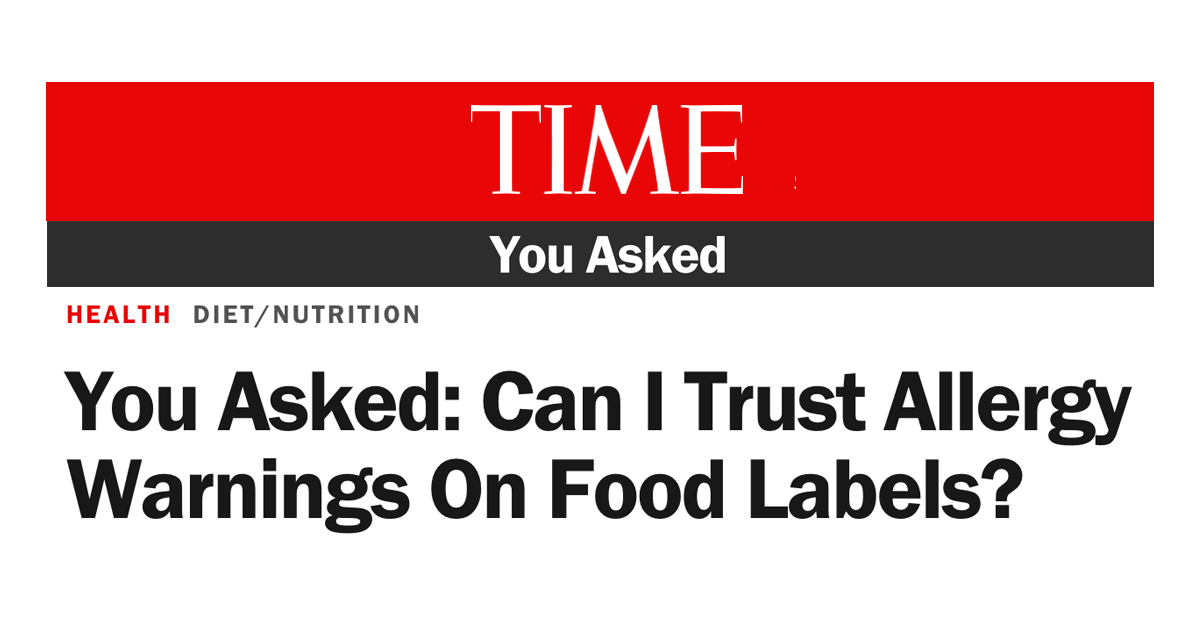An article by Markham Heid posted on Time’s website yesterday seeks to answer whether you can rely on those voluntary “May contain…” and “Manufactured on equipment that also processes…” warnings that appear on food products. We say voluntary because the FDA only requires that manufacturers disclose when a Top-8 allergen is an ingredient of a product, not when there is a danger of cross-contact with an allergen that is processed on the same equipment or in the same facility as the product.
While the article is well written, it may mislead the reader by giving the impression that you can rely on labels to determine whether a food product is safe because “no one is trying to hoodwink consumers—or expose someone with an allergy to a potentially harmful ingredient.”
The truth is that manufacturers are left to decide if and when to include such a warning on the package and face little risk of litigation as long as they stick to the letter of the law. For many larger manufacturers, it all comes down to the following formula for determining whether to include a “may contain” warning:
Does the cost of litigating a relatively small number of cases caused by cross-contact outweigh the cost of placing a “may contain” warning on the product and driving away tens of thousands of customers who may never suffer a reaction?
Leaving that decision to the manufacturers is one of the major flaws in FALCPA, the regulation that dictates how food products under the jurisdiction of the FDA must disclose allergen content on the label.
Here’s how we at SnackSafely.com sum up the usefulness of current label disclosures:
The label can tell you when a product is unsafe, but the label alone can’t tell you whether a product IS SAFE for your allergy.
Still confused or unsure of what you can rely on the label to tell you regarding your allergy? This graphic sums it up well:






